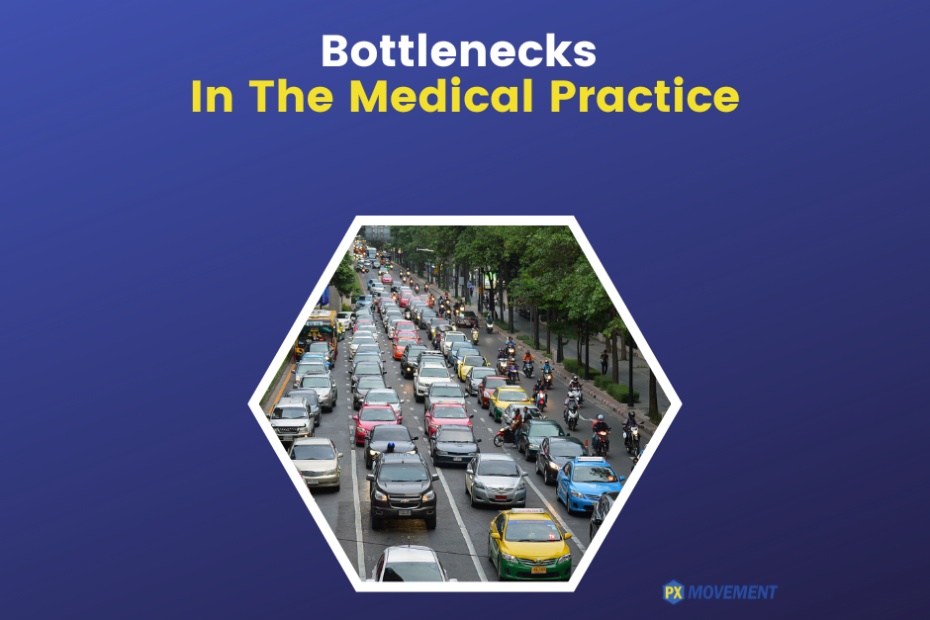| We often think of bottlenecks in terms of traffic jams (and the associated “rubbernecking” when drivers pass an accident) or when you want to empty a bottle that’s full of coins and they get stuck in the neck of the bottle. Hence the term. There are expert engineers whose careers are devoted to identifying and eliminating bottlenecks in factories, amusement parks, and freeways. When we dig deep into the problems facing busy medical practices, we usually find that bottlenecks are a source of frustration that interfere with both the patient and employee experience. The symptoms usually include: – Patients having to wait excessively to be seen – Diagnostic equipment that is unavailable because another employee is using it – Doctor(s) running behind schedule in a way that compounds over the day – Scheduling challenges to create more capacity – Not enough rooms! This list could be much longer, but hopefully, you get the point. To all the doctors and practice managers reading this, rest assured you are not alone. Many businesses suffer the same issue, especially in moments where the “demand” for a resource exceeds the available “supply” of that same resource. A prime example is what happens when you line up to board a plane for a flight. You stand in line. Then they scan your ticket. Then you walk a few feet and stand in line again, wondering what’s taking so long. This is a big issue for Southwest, partly because they don’t assign seats. They’re trying to solve this specific bottleneck using Atlanta’s Hartsfield airport as a test site in The Airline Experiment to Make Boarding Less Awful. They recognize that passengers are often not paying attention and are adding visual cues such as a countdown timer on their monitors at the gate. They are playing up-tempo music on the jet bridge and noticing patients moving faster. Disco moves, anyone? And they are making it easier for employees to communicate via private chat to solve problems in the moment. All of this will add up to a whopping 2-3 minutes saved in the boarding process. When you multiply that by the number of flights per day at each gate, it may allow them to add an extra flight to the schedule. That makes even these seemingly small savings worthwhile. This same thinking should be applied to your practice. What opportunities do you have to save a minute here and 30 seconds there? I’m betting that similar “small” savings in your practice can add up to greater efficiency (e.g., you can schedule more patients) or effectiveness (e.g., your patients will thank you for not making them wait). For sure, it’s worth examining. While I am a strong advocate of eliminating wait times, even adding an activity to the waiting – as Southwest is doing with music thumping in the jetway – helps change the perception of time and reduces that feeling of excess waiting. Given that waiting is the #1 complaint patients have when visiting a medical practice, this one is worth tackling. Just ask Southwest! |

